By Christian Mills, with Introduction by Peter Cross
Introduction
For this series focused on style transfer technology in game development, we feel privileged that Graphics Innovator, Christian Mills, allowed us to repurpose much of his training in the Machine Learning and Style Transfer world, and share it with the game developer community.
Overview
In the previous section, we installed Unity* and selected an image for style transfer. In this part, we’ll cover how to use the Unity Recorder tool to record in-game footage. We’ll be training our model using a pre-existing dataset of real-life images. This enables the model to learn to do a decent job stylizing arbitrary images. However, some games can look drastically different from real-life. In these situations, it can help to add additional training images from the target game. This should help the model learn to stylize frames from that specific environment.
Install Unity Recorder
The Unity Recorder tool is available through the Package Manager.
In the Unity Registry section, type 'unity recorder' in the search box and click Install.
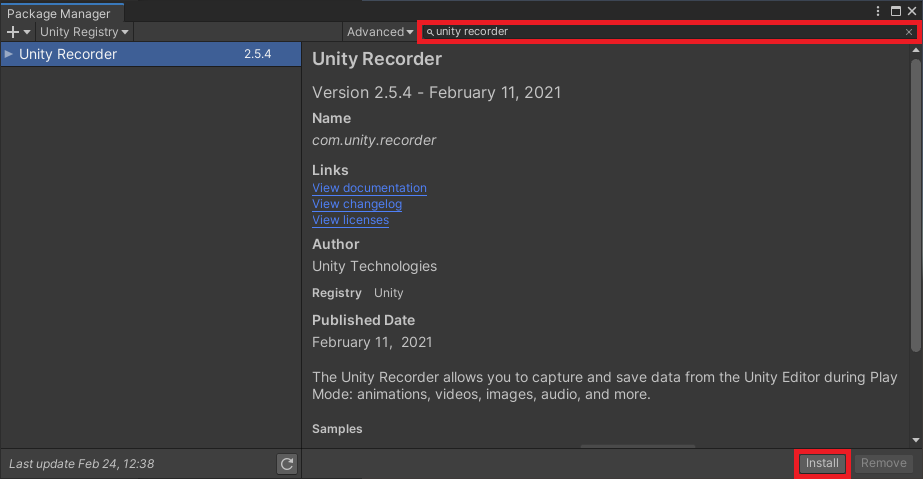
Open Game Scene
In the Assets section of the Project tab, navigate to the Scene you want to record.
For the Kinematica demo, open the Biped scene in the Scenes folder.
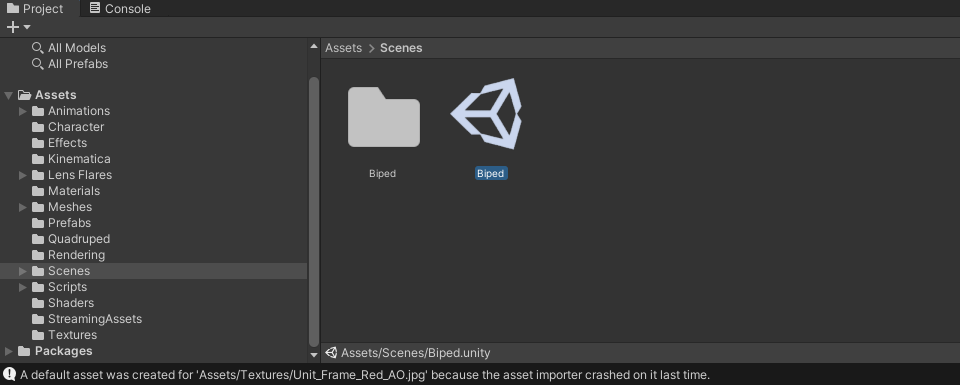
Open Unity Recorder
The Unity Recorder tool is accessible in the General sub-menu in the Windows section.
The tool will open up in its own window.
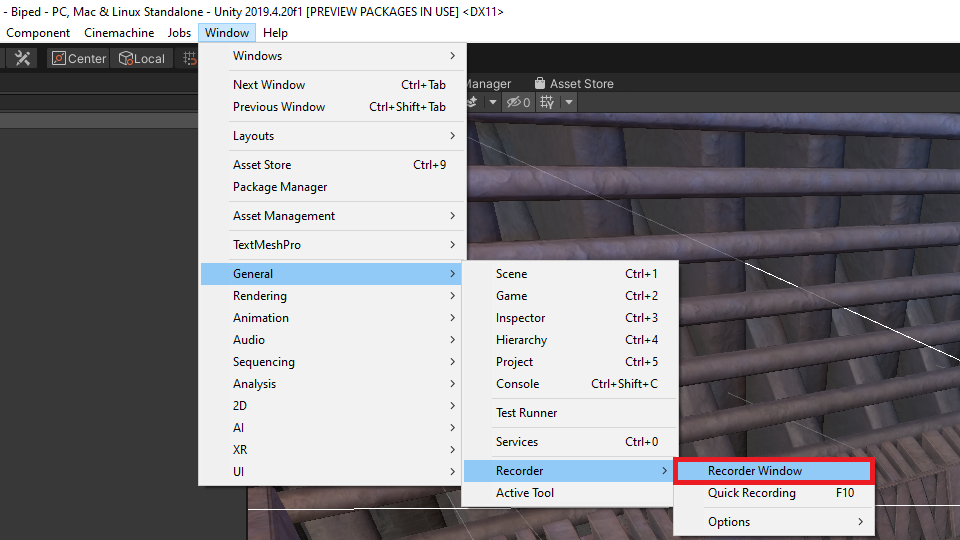
Add Movie Recorder
In the Recorder window, click the + Add Recorder button.
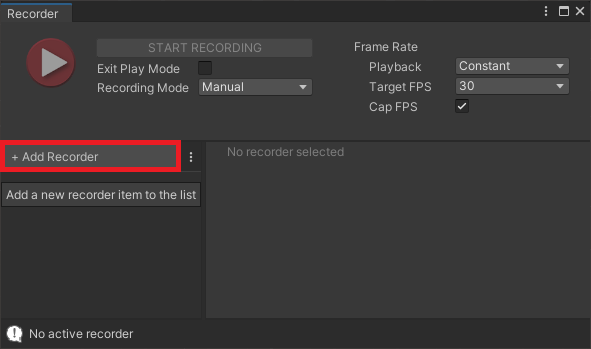
Select the Movie option from the drop down.
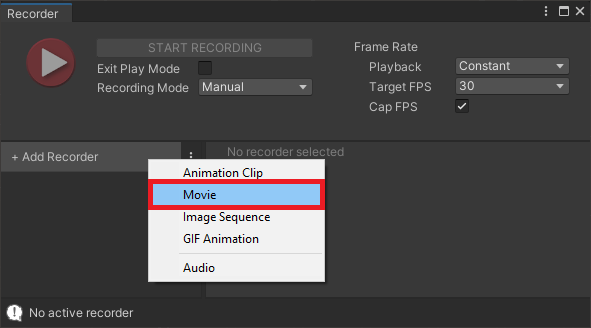
It is recommended to set the Output Resolution to 1080p or higher to reduce the amount of compression artifacts.
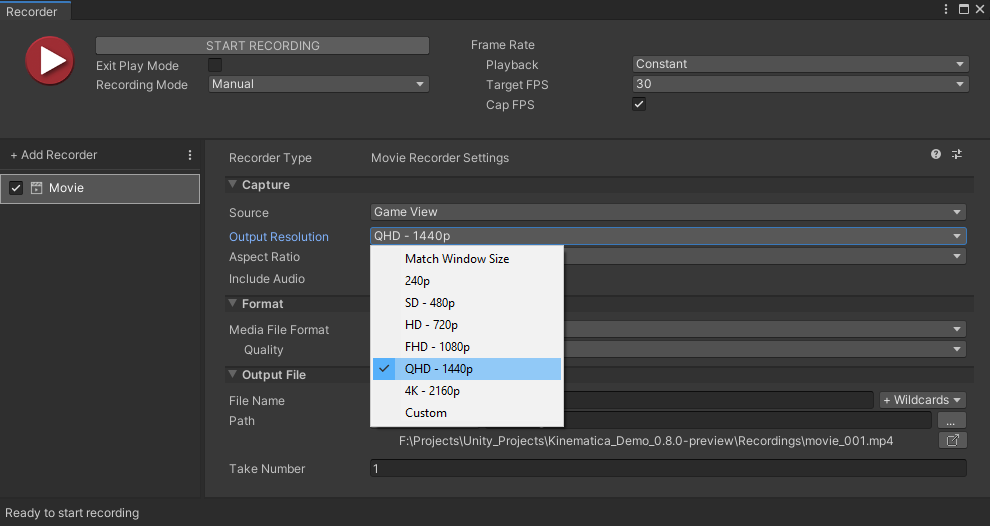
Record In-Game Footage
Click Start Recording and the game will begin automatically. Once the game is running, move around and try to capture different parts of the environment. The amount of footage required depends on the size of the scene. The only thing to keep in mind is that you’ll need to upload the video file to Google Drive. The more footage you record, the longer it will take to upload.
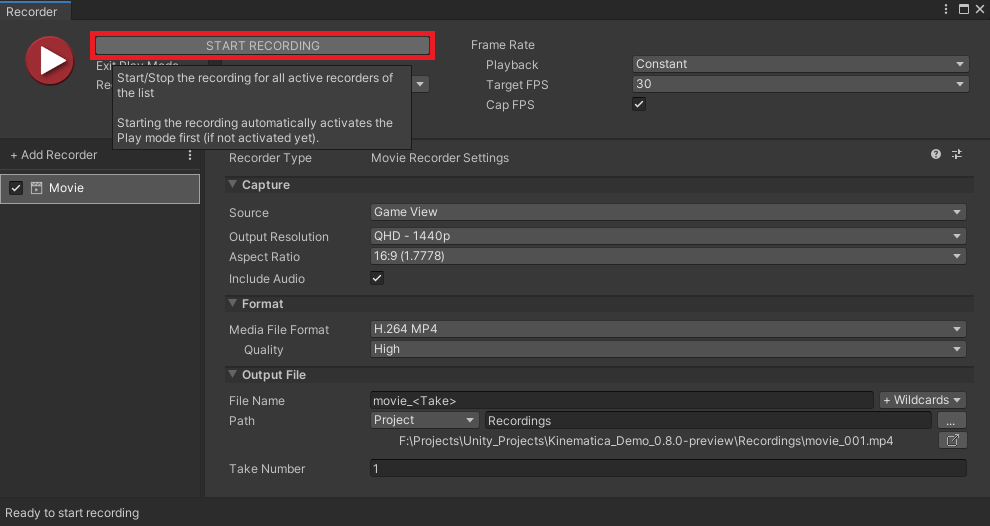
Once you’re finished recording, you can open the Recordings folder by clicking the button outlined in the image below.
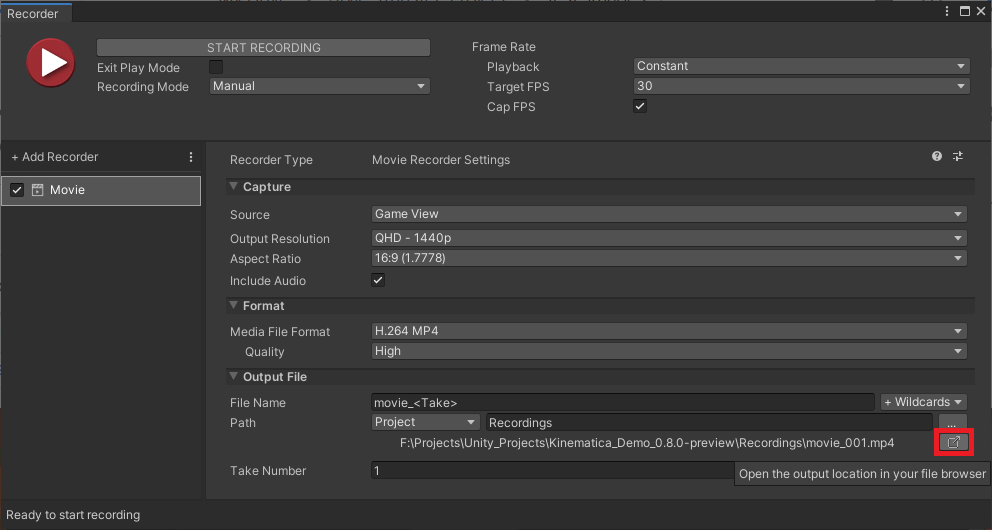
Upload Video to Google Drive
The last step is to drag and drop the video file into the project folder in Google Drive.
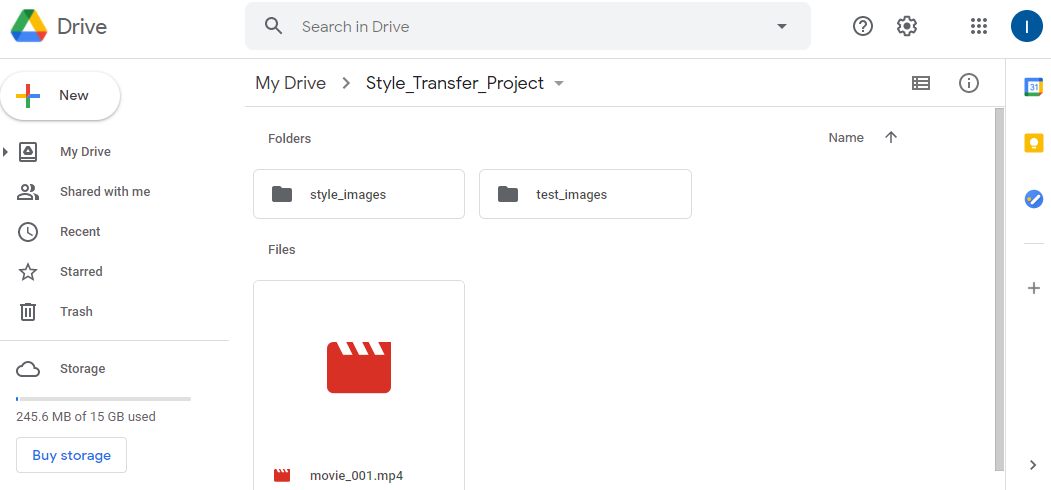
Conclusion-Part 1.5
That’s all that’s needed to generate custom training data from your Unity project.
You can also use any other recording software that you prefer working with.
This can be beneficial if you want more control over the quality of the video recordings.
In the next post, we’ll cover how to split the recording into a folder of images and finally train a style transfer model in Google Colab*.
Previous Tutorial Sections:
Part 1
Next Tutorial Sections:
Part 2
Part 3
Project Resources:
GitHub Repository